|
2005 La Carrera Panamericana Vintage Car Race
No bikes, Just Speed And The World’s Most Dangerous Road Race Photos and Text By K. Randall Ball |
|
|
|
I don’t know where to start. A riding buddy shows up at the
Bikernet Headquarters with a modified ’54 Lincoln and asked for
some help. So we quit working on bikes and tinkered with the
stripped Lincoln with the rebuilt engine and a Carter carb from
Highway Patrol Cruisers of the era.
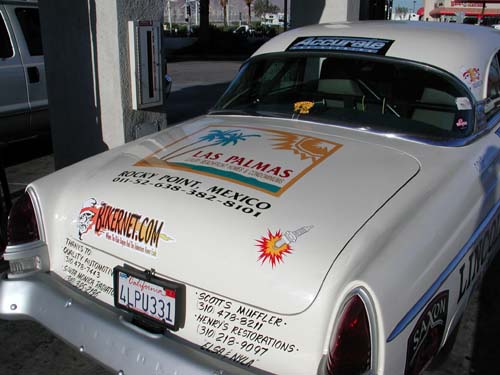
Dr. Hamster, or Dr. Chris Reichardt is a Hamster of long standing and we’ve ridden to Sturgis on numerous occasions. In other words we’ve been pals for years, maybe 20 or so. “Lieutenant,” Chris called me, when I was a Hamster, “Check this thing out. I’m going to race it across Mexico.” So the back story behind the stinkin’ Lincoln surfaced. Seems the race began in the early ‘50s as a way for the Mexican government to promote their new highway system from the bottom of the country to the Nuevo Laredo Border in Texas. They invited all the elite race care drivers from the US and let them party from one end of the country to the other. Lincolns dominated the first couple of years against the finest Europeans cars made, including Mercedes, Porche, Ferraris and Mazaritte’s. “They took first through 3rd place with ’53 Linclons,” Chris said. “The next year they took 1st and third. They couldn’t be beat. A couple of years later the race was shut down. It was then labeled the The World’s most Dangerous Road Race.
Some 18 years ago the doors to the Pan Americana were opened once more behind more stringent rules as a Vintage Car rally. Only cars built before 1967 are allowed on the 2,200 mile journey. That’s a dubious ruling since most of the cars are heavily modified. Chris read the rule book thoroughly and took it to heart. It said that Original Panam cars had to be original, so he stood on his intergrity and kept to the guidelines stridently. Although he had an itch for vintage sports cars he hadn’t ever experienced this race first hand. It was a new bag. So we tinkered with an experienced car. It indured mayhem in Mexico twice, in 1999 and 2000 in the hands of a shady racing personality. The car was repossessed and Chris bought it, unknowing of the flim flam man behind its history until he initiated his investigation. I guided Chris and the car to Henry Figuero’s paint shop and refurbishing paint work proceeded. This Stinkin’ Lincoln would race again.
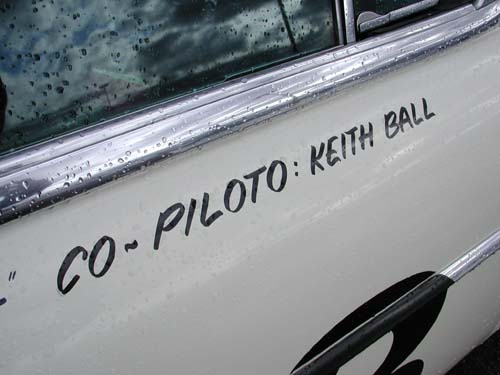
So how did I stumble into this mess? I delivered the good Doctor to Henry’s San Pedro tin paint shed to pick up the Lincoln just after George, The Wild Brush, pinstriped the beast and noticed that it said, “Piloto,” on the drive’s door and, “Co- Piloto” on the passenger door. Being a reporter by nature I asked, “Whose the ‘co-piloto’?” “You, Lieutenant,” Chris said indicating that the positioned wasn’t filled.
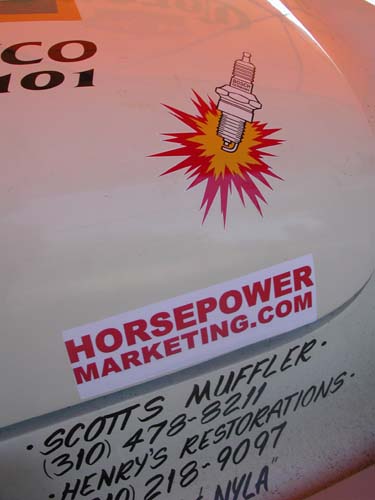
I thought about it for five minutes. I needed an adventure fix for 2005 and this looked like the hearty makin’s of a good one. Something I’d never done before. The deal was that we would split the expenses of the trip. I would come up with the cash for the entrance fee $5,000, thereabouts, and he would cover the car expenses. Being a starving writer I had to ponder my budget and the time away from Bikernet, two to three weeks.
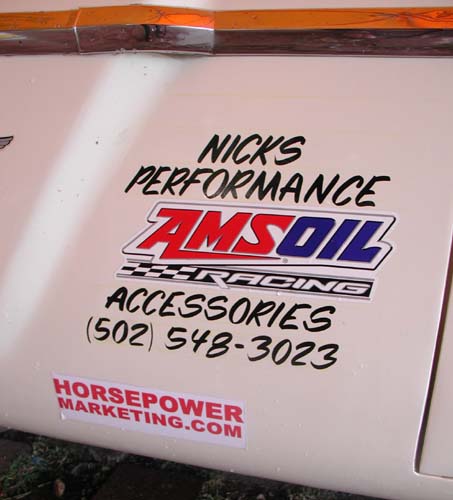
“Yep,” I said. “I’ll go for it. Maybe we could put together some sponsors to help us with the expenses.” As it turned out Bikernet readers and advertisers stepped up to the plate with over $10,000. Saxon partners had a vested interest in Mexico with their La Palma resorts at Rocky Point. Berry Wardlaw is working with me on the Bikernet Bonneville effort and his Accurate Engineering business stepped up to help. Then longtime reader Richard Roesler threw in along, with Jeff Najar of HorsePower Marketing and Nick Roberts of Nick’s Performance and Amsoil Oils supplied all the lubricants. And of course Lucky Devil’s Metal Works in Houston backed our play.
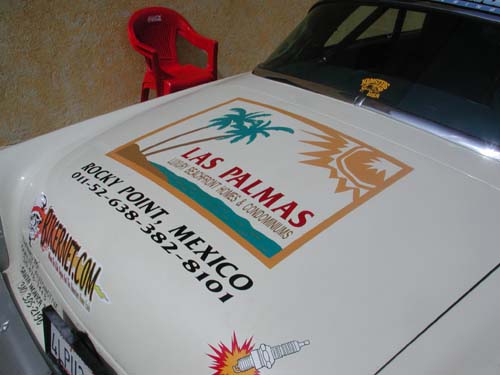
Suddenly the drunken dream began to take shape. After building a bike and riding to Sturgis we spent weekends tinkering and prepping the car. Nyla Olsen backed us up with sticker manufacturing, and made sure all the papers were in order. We hit the Mexican Embassy for documents for the car and for ourselves. We pulled the stock bench seat and replaced it with two, old, used Porche bucket seats and a center counsel out of a T-Bird from Gene Koch.
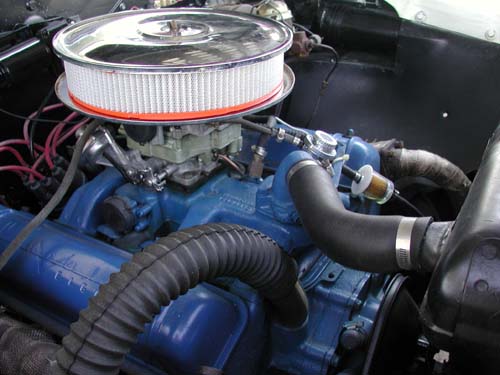
Chris had the tranny rebuilt, the rear leaf springs re- tempered, new shocks installed, the radiator rebuilt, all the hoses replaced and an electric fuel pump added. He made every effort to maintain the originality about each element, not knowing that most cars, even in our class, were severely modified. We ran stock drum brakes to our chagrin, while every other car team installed state of the art discs. We were harshly hampered, but what the hell. I built a rigid and rode it to Sturgis. What could be more old school. At least this had shocks, windshield wipers and a gas gauge. What more could we possibly require. Gene tossed in a GPS, which was a lifesaver.
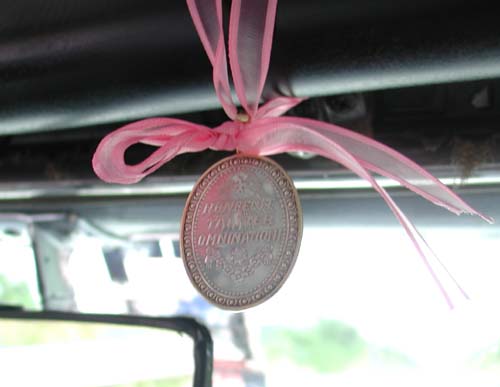
As I returned from Sturgis, Chris owned the Hot Rod Lincoln for three years and was confident that we were ready to rock. I drove it and if felt uncertain and squeamish. He had it tuned and dyno’d. We worked on the car every weekend, worked with sponsors, hunted parts, collected our Amsoil lubricants, packed, prepared a schedule for the run to the bottom of Mexico to hook up with the other racers in Tuxtla Guitierrez. We drove out to a hole-in-the-wall joint in North Hollywood and ordered fire suits, grabbed new, state-of-the-art, full face bike helmets, bought flame retardant gloves and checked the rule book. We made plans to meet with two other cars and caravan to Mexico from Califa. Our initial plan called for driving in shifts per gas stop. He would drive for a tank, then the Co- Piloto took over. When we hit the race he would Pilot one day and I would pilot the next. The more we read about the rally the more the pressure was on the Navigator to follow rules, be the guide, track all the aspects of the car and make sure everything happened right on time.
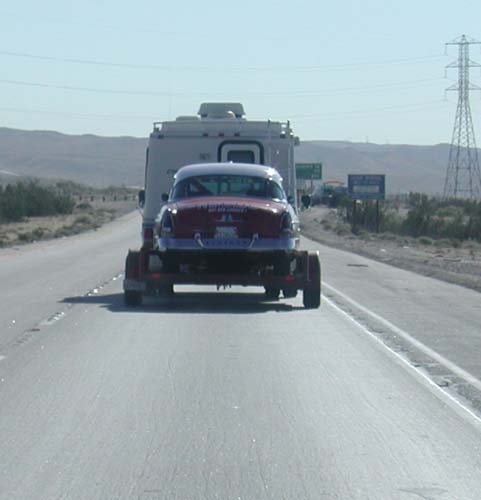
At 5:30 a.m. on October 14th, Friday, we pulled out of the Bikernet Headquarters and rumbled toward the Arizona Border. The Linclon was stripped on the interior, but Chris lined the deck and firewall with a protective insulation to keep the rattling noise down and exhaust fumes from killing us. We had four point racing harnesses and a complete roll cage. The Lincoln was powered by a 317-inch V-8 purportedly capable of 154 horsepower. It was the first production V-8 built in ’54 and state-of-the-art for the era. The intake manifold was replaced with a more performance unit and a big 4-barrel Carter, police carb. There were two, two- door models in ’54, the Cosmopolitan and the Capri. The Cosmopolitan had a Black steering wheel and less trim than the Capri. As we pulled out and headed toward the freeway, we were both consumed with anticipation, check lists and that ever- nagging concern about a new/old vehicle. It was just like building a bike and riding to Sturgis—only worse.
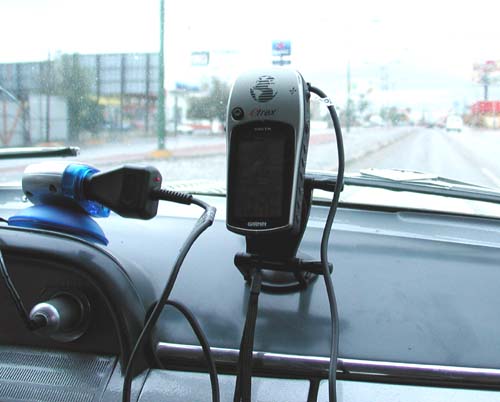
Our mission called for driving 2000 miles, then surviving a race for 2,200 miles and then driving another 1,000 miles home. We listened for every odd sound, watched the gauges for changes or bad indications. Our nostrils were wide open for the wrong smell or too much heat. Our first stop was Billings truck stop in Palm Springs to hook up with two other teams. Little did we know they were both packing ‘53 Lincolns, except their cars were on trailors behind Campers and they had teams. We were two guys in our car with our shit banging around in the back. We quickly discovered how modified our class mate’s cars were. They both had disc brakes, late model transmissions, heavily modified engines and electronic ignitions. It was September in the desert and the weather was warming up. We had a couple of car oddities to monitor right away, the running temp (160-180 degrees) and the Horn button that let us know how powerful the horn was every time we shifted it into first. Also a couple of quirky elements about the driveline were cumbersome. The tranny had no “park” and we had to pull the parking brake on at every stop and remember to disengage them. The brakes worked so-so. Plus the car didn’t want to idle and died frequently. As we dodged tumbleweeds and slabs of truck retreads Dr. Chris told me stories of past races. “They stopped the race in 1954 because too many spectators died,” he said. “The average speed of the ’54 Lincoln winner was 97 mph. The race restarted in 1988.” At virtually every stop we checked the oil, water levels and mileage. At Gila bend we clocked 12.4 mpg, which wasn’t bad considering our fuel capacity was in question. It was an old, lined fuel cell that may have held 10 or 15 gallons when installed. We also discovered that we were adding a quart of oil per tank of gas and that was troubling. We discovered an oil leak around the base of the disconnected, mechanical fuel pump. We relied on an electrical fuel pump. We also wanted to check the oil filter and I check the manual full of sharp mechanical drawings for solutions.
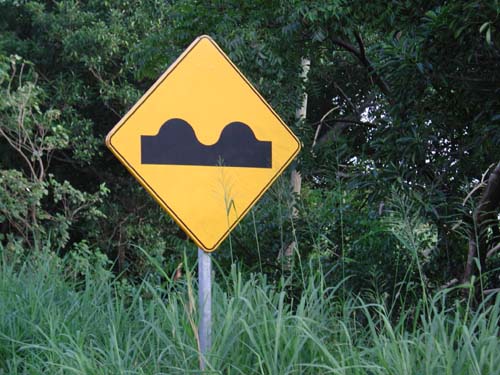
Before the next stop we lost one of the teams. They had a flat and forgot to refuel—ran out of gas. Our car was handling terrifically as we caught Interstate 8 east toward Tuscon, 99 miles ahead.
We already pondered a 35-gallon tank for the future. By 5:30 p.m. we were 97 miles east of El Paso. In Deming, New Mexico. Dr. Chris tightened the fuel pump diaphragm and we only added a ½ quart of oil. I sprayed the ignition switch with WD-40 and we made a list for a Walmart store run in El Paso before we crossed the border. We needed a case of oil, a case of water and a case of trail mix. It was a grizzly stretch of road with dust storms, lightening and a 75 mph speed limit. We were already holding our speed back to conserve fuel. We had maps of Mexico, but no maps of California, Arizona, New Mexico or Texas. We used the GPS compass and interstates. We drank water, ice tea, ate trail mix and drove. We covered 700 miles the first day. As we rolled into Texas it was flat, on a misty gray morning in the New Mexico Plains. Crossing the border into the Lone Star State we met rain, faltering windshield wipers and leaks that dripped water on my feet from cracks in the 50 year old windshield insulation. Another project lay ahead. Also the high-beams were on all the time and that needed to be fixed.
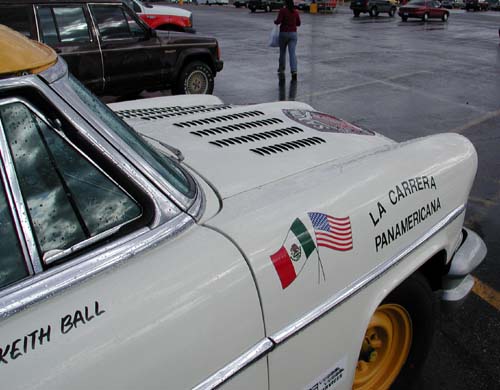
Other than the water dripping on the electrical panel under the dash, the car ran well, except for the alarming incessant slamming of the gears in the hydramatic automatic transmission. As we headed into downtown El Paso and the streets turned from modern western U.S. streets to slovenly border town ghetto strips, we felt a burning desire to ask, “Donde esta el Sol,” We needed some sun as we crept over the border into Mexico.
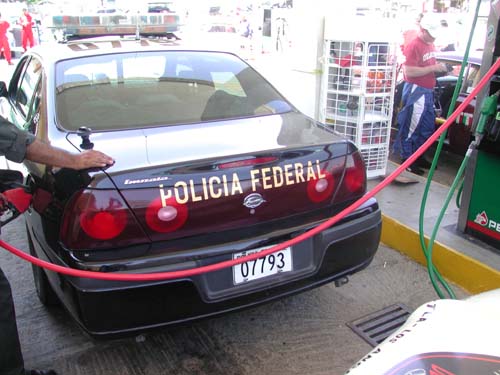
Biting our nails we rolled up to the customs department, expecting substantial delays and Federales with their hands out. Quickly an officer took a look at our thorough papers and told us to scoot on down the road to another town and another vehicle inspection station. We followed his directions implicitly and the next thing we knew we rolled out of Juarez. We ran through grubby flooded streets for 20 kilometers to Chihuahua. We never saw a damn thing resembling an inspection station, so we peeled the sticker off the paperwork, applied it to the inside of the windshield and kept rolling.
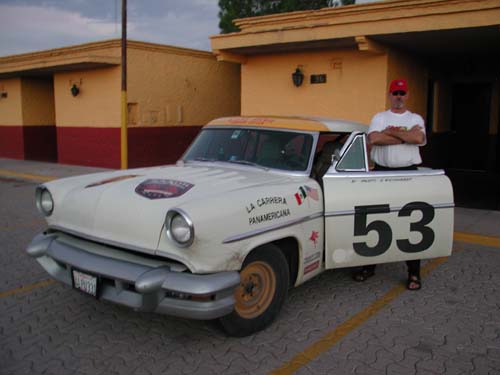
We stopped in Aye Chihuahua after 150 miles and filled up, 40 Liters for 366 pesos. The traffic was a mess, jammed, redirected on detours onto little cluttered streets. We endeavored to cover as many miles as possible and find a town and hotel with a secure parking lot, or the engine might be missing the following morning. We made a list of Hot Rod Lincoln items to fix.
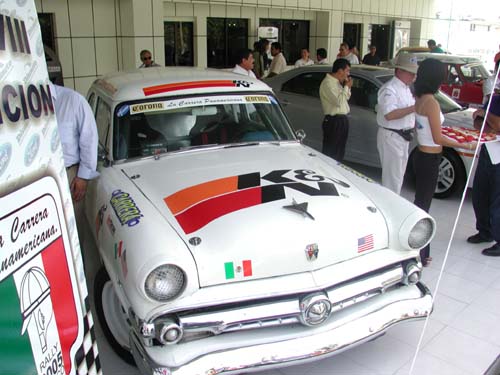
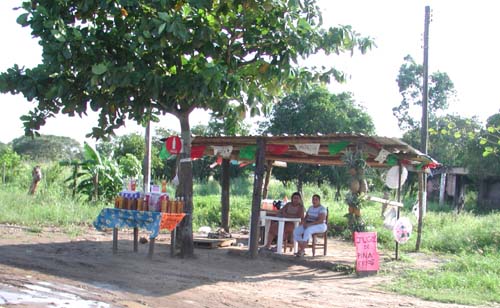
The rearview mirror vibrated loose and was a pain in the ass. Windshield insulation was cracked from 52 years of sunlight and leaked. It needed caulking. The passenger vent needed to be sealed with duck tape to prevent exhaust fumes from filling the cabin. The high-beam switch, as it turned out, was wired backwards and was on all the time. We noticed that the original disconnected fuel pump continued to leak oil around the diaphragm seal and we were still forced to add oil at almost every gas stop. Plus something quirky about the ignition switch surfaced. Burnin’ daylight we hunted for safe haven. We also needed another Wal Mercado, to find a stopwatch and a hand held calculator, but we weren’t finding shit.
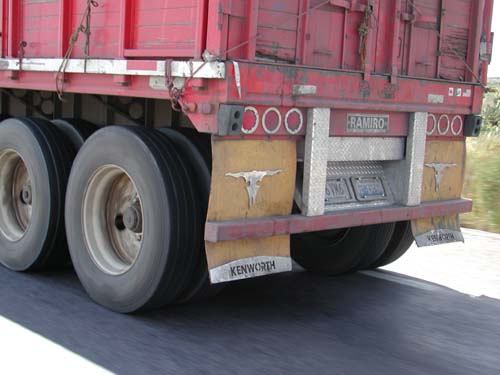
Neither the Frommers nor the AAA guide book listed any of the towns we passed through. Frommers didn’t have a chapter on the region we rumbled into south of Chihuahua. We had entered the badlands, Deadman’s cove or death valley of Camargo and Jimenez. “You know,” Chris said staring through the dusty windshield. “There’s bandits who block the road at night and look for unsuspecting touristas.” I drew my blade and sharpened it against the interior roll bar.
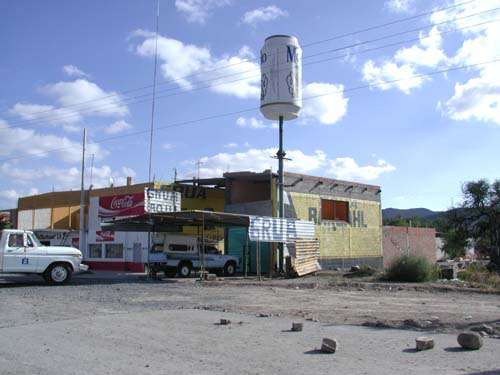
Just a half hour before dark we cruised into the small town of Jimenz, and while residents stared at the old Lincoln covered in sponsorship stickers, we stared back looking for a place to stay. We found a the El Herradero (guy who brands animals) Hotel surrounded by cops. A bright yellow top fuel dragsters was parked in the lot as we rolled up to the security gate.
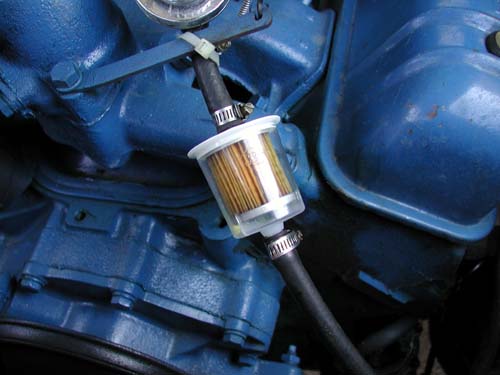
Day two, in Mexico we checked the oil in the morning (cold) and the tranny fluid. Just 142 miles out of town we ran out of gas and used our 5-gallon reserve in Gomez Palacio to get us going. Another 202 miles and we came face to face with our first breakdown. The car sputtered and died. It had to be crap in the fuel. We replaced the muck filled fuel filter and hunted for a float bowel. Something was wrong and we limped back into town to find a station. No luck. We concluded that we had run out of gas and hit a bump jarring the crap-lined fuel cell. We were running between 11 and 15 miles to the gallon, maybe. It made watching our mileage and gas stops critical.
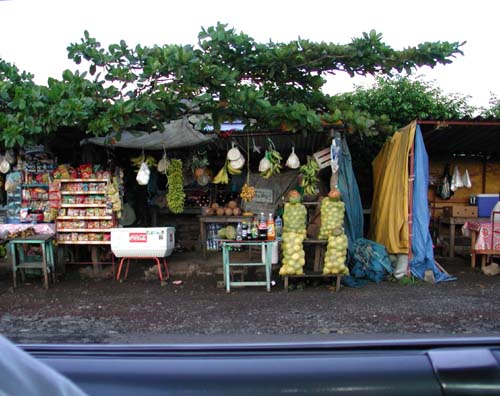
It was 256 kilometers to Zacatecas ahead. We checked the fuel filter again and the oil and rolled out of town. Rolling hills were covered with green shrubs and Yucca plants. Little block buildings were scattered along the two-lane, cemented to small taco stands. The weather was perfect, warm, sunny, but reports indicated there was flooding in Mexico City and Oaxaca. We were waiting for more reports, but didn’t have a radio and the MP3 player ate batteries too fast to use. I was rapidly learning the Garmin GPS. What a lifesaver, although the map aspect didn’t work inside of Mexico. Hell, some of the maps we had also didn’t work in Mexico. Whole highways were missing.
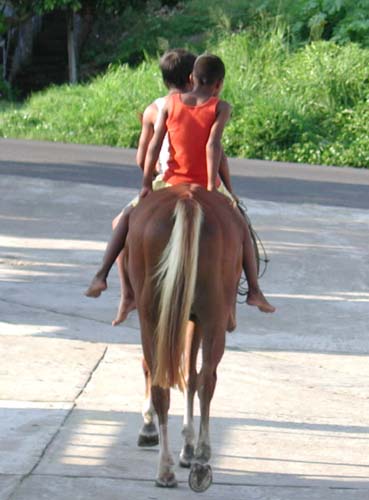
John, from one of the other teams, shot our hopes to the moon with his comment, “Tequila and Viagra every night of the race.” Where we turned south in El Paso they continued in the comfort of their motorhomes into Laredo before crossing the border. Those words described the nightly race parties ahead. That was enough to keep any two red-blooded Americans rolling across any country. We jammed into Rio Grande, 101 miles and filled up, 30.1 Liters or 12 miles to the gallon. We were right on schedule to make it to the race start city a day ahead of the gun going off.
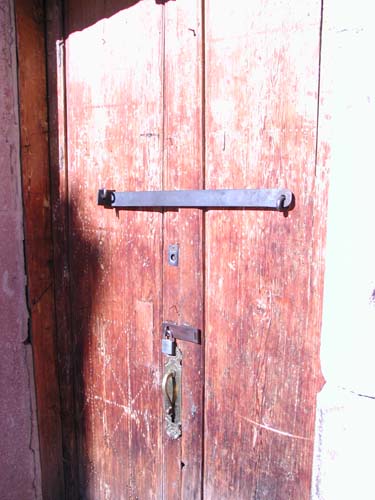
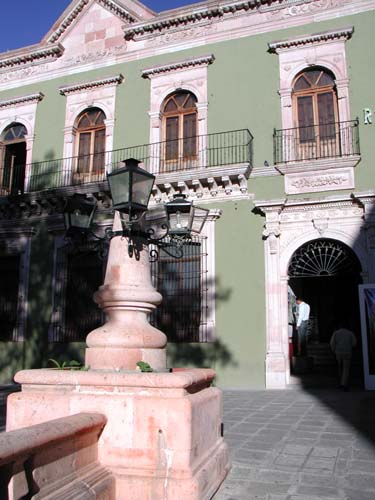
The Lincoln held it’s own at 7110 feet and Zacatecas at 7,800 feet. In less than a week we were scheduled to run back through Zacatecas during the race. Next stop was 111 miles, and another 30 liters of fuel for 12.9 mpg. I was learning how to figure liters into gallons by dividing 30 by 3.5 and coming up with 8.57 gallons and dividing that into 111 miles.
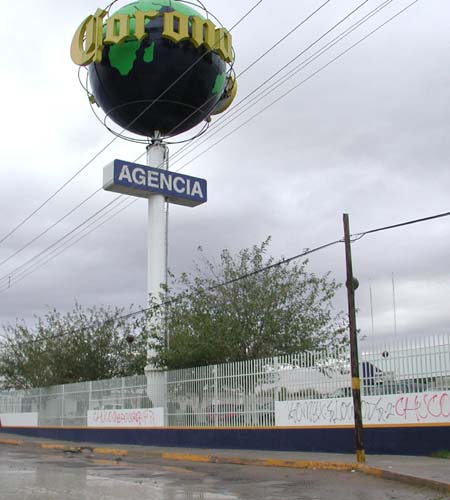
On a serious mission, we missed breakfast, instead drank a Boost drink, and shoveled vitamins. For lunch we kept moving on cocktail mix, salted nuts and water. At Querataro the GPS showed 238 miles. We covered another 127 miles and crashed at a Holiday Inn and enjoyed a tantalizing fish dinner. The rules for eating in Mexico are stringent. Meat could be okay, but not vegetables or anything cooked or washed in the water. That meant only eating fruit with skins and always drinking beer from the bottle and no cocktails including ice.
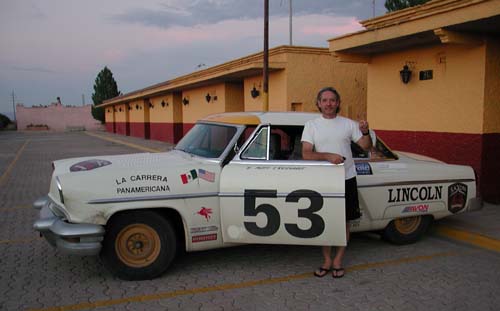
At 7:15 the next morning we hit the road. We faced a critical obstacle, Mexico City, population 25 million and the country’s Capitol. Snatching pastries and coffee we rolled south, in the cool morning air, on 57D to Hwy 136, divided highways to circumvent city traffic. Toll roads were a constant consideration. We were forced to maintain and active supply of pesos. Watching for Coytopec we hit Texcoco to Los Reyes, then San Martin or Puebla. We stopped for gas in Tepoztlan at 108 miles on the trip gauge at 7,400 elevation. We stopped, gassed and inquired for a secret path around the city. Leaving we still weren’t sure which way to go. Little did we know we were clear of the rubble from the city founded in 1521 on the ruins of the Great Tenochtitlan.
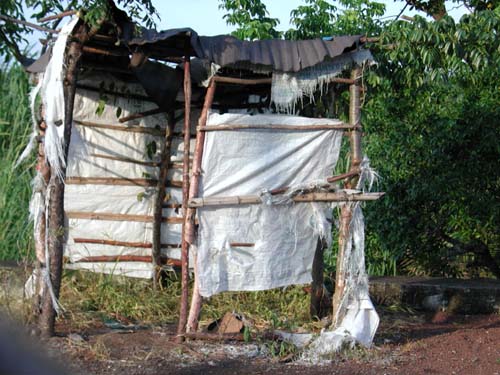
On to Page 2... |